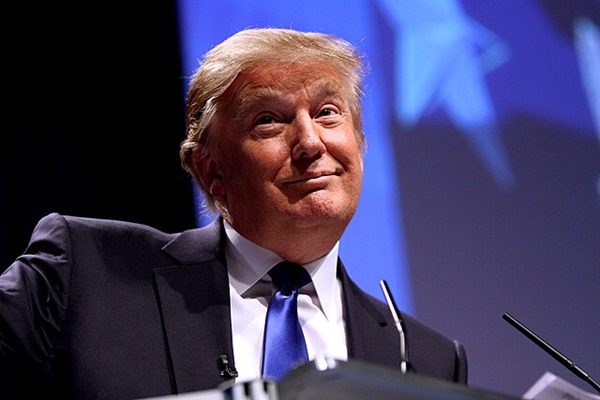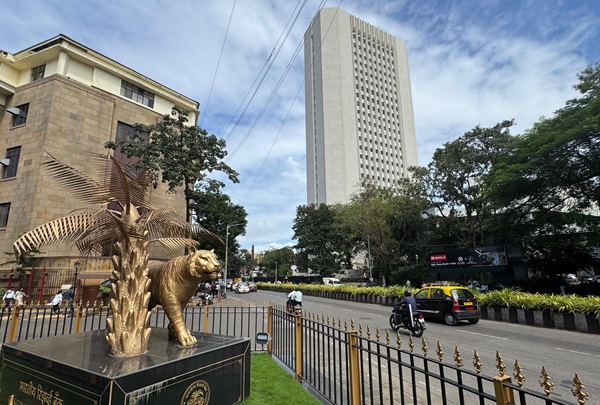.png)

T.K. Arun, ex-Economic Times editor, is a columnist known for incisive analysis of economic and policy matters.
April 4, 2025 at 1:48 PM IST
China has slapped reciprocal tariffs on the US. With Japan and the EU also gearing up to respond in kind to US President Donald Trump’s tariff offensive, world trade and growth are slated to suffer. India is preparing to negotiate its way out of the punitive tariffs placed against it. To fashion an effective policy response, it makes sense to identify the specific bee in Trump’s bonnet that is driving his tariff offensive.
John Maynard Keynes once observed that “(p)ractical men, who believe themselves to be quite exempt from any intellectual influences, are usually the slaves of some defunct economist.” Trump’s trade delinquency stems from slavery to the defunct theory of mercantilism and ignorance of the concept of comparative advantage.
Mercantilists believed that the purpose of trade was to accumulate specie, that is, coin or bullion. You exported as much as you could and imported as little as you could, protecting your domestic economy with high tariffs on imports. The trade surplus gave you specie to hoard. The greater the hoard, the wealthier your nation, thought mercantilists. Trump articulates this notion when he accuses countries that run a trade surplus with the US of “ripping us off.”
The modern understanding of deficits and surpluses in trade, grounded in broader macroeconomics is altogether different. What matters for a country is not just merchandise trade but also its trade in services. The current account takes into account the broadest measure of trade in goods and services, including the service of making your nation’s capital available to another nation, and supplying your nation’s labour to another nation for its productive use.
The current account balance, thus, takes into account the inward and outward payments on export and import of goods and services, net remittance income and net flows that service capital, whether equity or debt. The current account balance also measures the gap between domestic savings and domestic investment.
Everything that is produced, good or service, in an economy is consumed, invested or exported. But if you add up consumption, investment and exports, you do not get the value of total domestic production. This is because in everything we consume, invest and export, there is an element of import. So, GDP is the sum of consumption, investment and exports, less aggregate imports. Exports less imports is, of course, the current account deficit, if imports are larger than exports, and the current account surplus, if exports are larger than imports.
We thus have the basic national income identity, GDP equals consumption plus investment plus the current account balance. Saving is that part of the total output that is not consumed, that is, GDP less consumption. That means, saving equals investment plus the current account balance.
If exports equal imports, that is, the current account balance is zero, domestic saving equals domestic investment. If the current account is in deficit, domestic saving is investment less the value of the deficit. Investment, in other words, is larger than domestic saving by the extent of the current account deficit. To grow faster than is possible on the strength of domestic saving alone, a nation must run up a current account deficit.
Your total purchases can exceed your income only if someone is willing to finance that excess, that is, make capital available to you. A current account deficit is possible only because someone else finances that deficit, injecting external capital. A current account surplus, on the other hand, indicates that you save more than you can invest domestically, and export that surplus saving to finance someone else’s deficit and growth.
Some might recall former Fed chairman Ben Bernanke blaming a global saving glut for the financial crisis. Countries with huge current account surpluses, China, Japan and the petroleum exporters, flooded the US government bond market with their surpluses, pushing interest rates artificially down, encouraging risky lending. After the crisis, China sought to diversify the deployment of its surplus savings away from US government bonds, and formed the Belt and Road Initiative.
When the victors of World War I placed onerous reparations on Germany, Keynes warned against it, in his tract, The Economic Consequences of the Peace, but was ignored. Germany was forced to squeeze consumption horrendously to generate the current account surpluses with which to pay reparations. Hitler took advantage of the resultant social unrest to discredit all moderate parties.
The mercantilist notion of virtuous trade surpluses was clearly flawed.
What is the theory of comparative advantage in trade? It says that trade allows nations to specialise in the lines of production in which they have a comparative advantage, resulting in greater production of all goods and greater consumption of all goods via trade.
David Ricardo made his case with the production of cloth and wine by Britain and Portugal. Say, Britain is more efficient in the production of cloth than Portutal and Portugal, more efficient than Britain in the production of wine. If Britain allocates all its resources to producing cloth, and Portugal, to production of wine, more cotton and wine would be produced than if each country tried to produce both. Britain can export cloth and import wine, and Portugal, export wine and import cotton, and both would have more of both goods.
Even if Portugal had an absolute advantage over Britain in the production of both cloth and wine, but had a higher degree of advantage in wine than in cotton, then also, by Portugal focusing on wine, and Britain, on cloth, trade would allow specialised production to leave both nations better off than in the absence of specialised production and trade. Impeding trade with tariffs undermines welfare. Comparative advantage can, of course, change with change in skills, technology, scale and so on.
If Trump could understand comparative advantage and be disabused of mercantilist virtue, the world would be spared the burgeoning trade war and growth-killing disruption.
Also Read:
Reciprocal Tariffs: Brace For Impact
Trump’s Tariff Shock Revives Mercantilism, Endangers Global Trade
Bilateralism Trumps Multilateralism As US Resets Trade Terms
India’s Muted Response To US Tariffs Contrasts With Global Assertiveness
India Likely to Gain from Trump’s Tariff Overhaul
India Singled Out In Trump’s Escalating Tariff crusade




